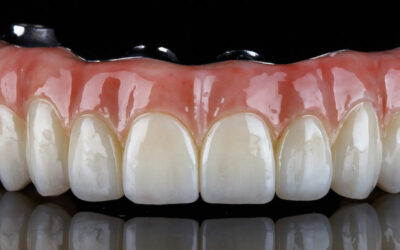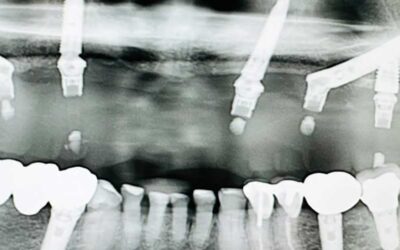The Consequences of Tooth Loss On Your Jawline and Facial Appearance
A healthy smile can do wonders for your appearance and self-esteem, making you feel more comfortable and self-assured in social situations. But did you know that missing teeth can seriously affect your facial structure and appearance? Keep reading for more information about how tooth loss can impact your jawline and facial appearance and how replacing missing teeth can help preserve and restore your smile, self-worth, and dental health.
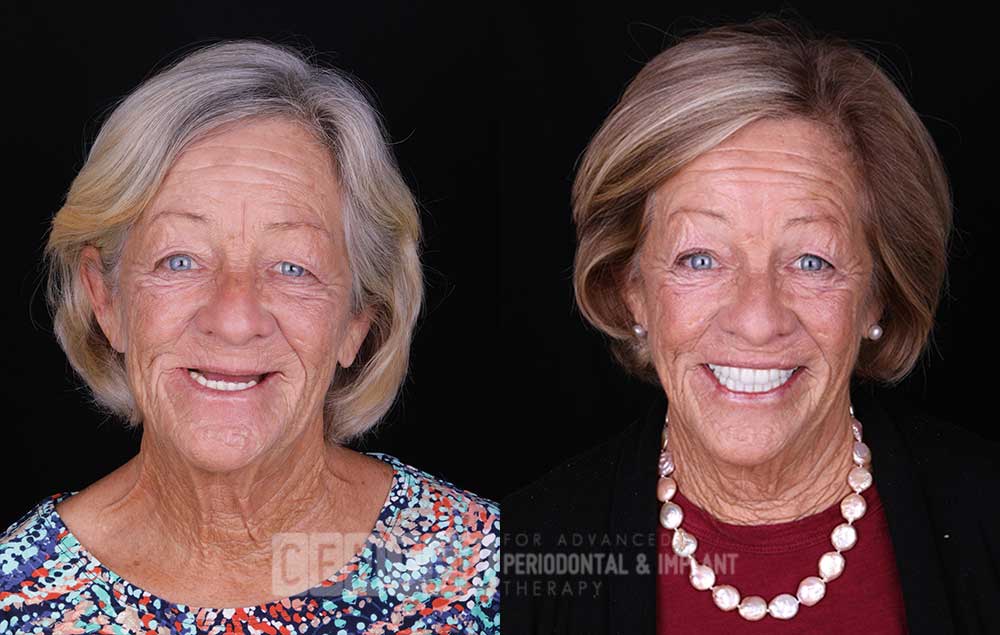
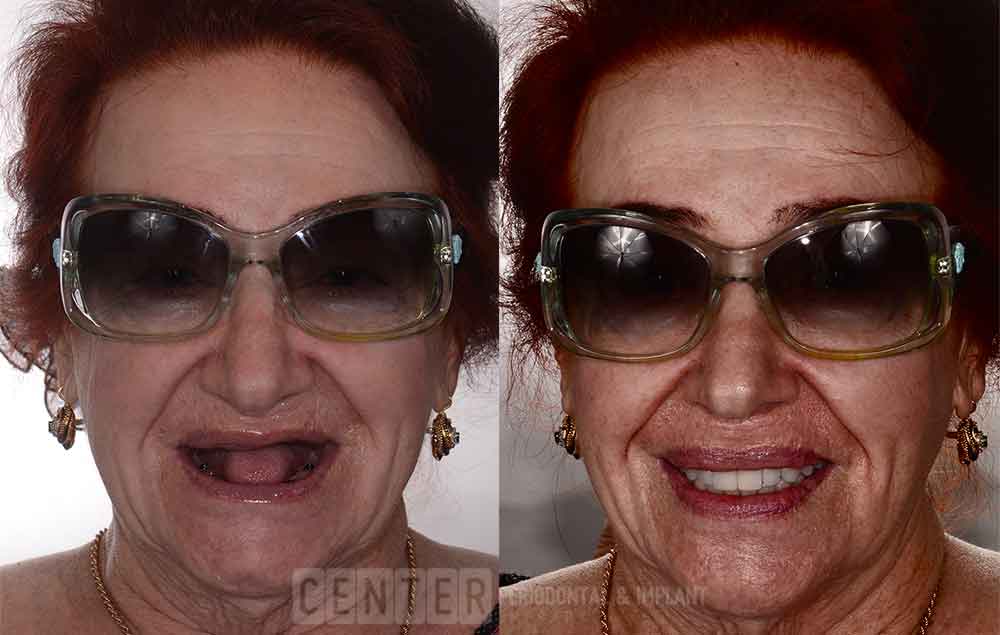
Missing Teeth Causes Jawbone Loss and Facial Collapse
Tooth loss can cause jawbone atrophy, a progressive decline in the health and structure of your jawbone, which leads to loss of bone mass and resorption. This process can lead to facial collapse, a shift in the shape of the facial structure due to jawbone loss, and result in a sunken or hollow appearance to the face and a shorter face than normal.
As you can see in these images below, without the bone and teeth support, the muscles around the lips start to deteriorate, leading to wrinkles making you look older than you are, while the upper lip appears longer and becomes more pronounced, which can also make your nose look more prominent.
To prevent bone loss and facial collapse, it is crucial to replace missing teeth as soon as possible.
How Does Missing a Few Teeth Affect Your Jawbone and Facial Structure
Most people think, “I’m only missing a few teeth. So what’s the big deal?” The truth is the more teeth you lose, the faster your jawbone will atrophy, which can lead to the loss of even more teeth.
This is because the teeth play a crucial role in maintaining the health and density of the jawbone. When a tooth is lost, there are no longer roots to stimulate the alveolar bone, and the tooth begins to resorb or break down, decreasing bone density.
A weakened jawbone may also increase the risk of a fractured jaw. This is because the jawbone provides structural support for the face, and when it becomes weakened, it may not withstand the forces it is subjected to daily.
Every tooth in your jawbone is vital for maintaining your face’s proper shape and structure. So don’t underestimate the importance of even a single missing tooth.
Taking action to replace it can help preserve your facial features and appearance. However, the longer missing teeth are left untreated, the more bone beneath the adjoining teeth is impacted, and additional tooth loss may result.
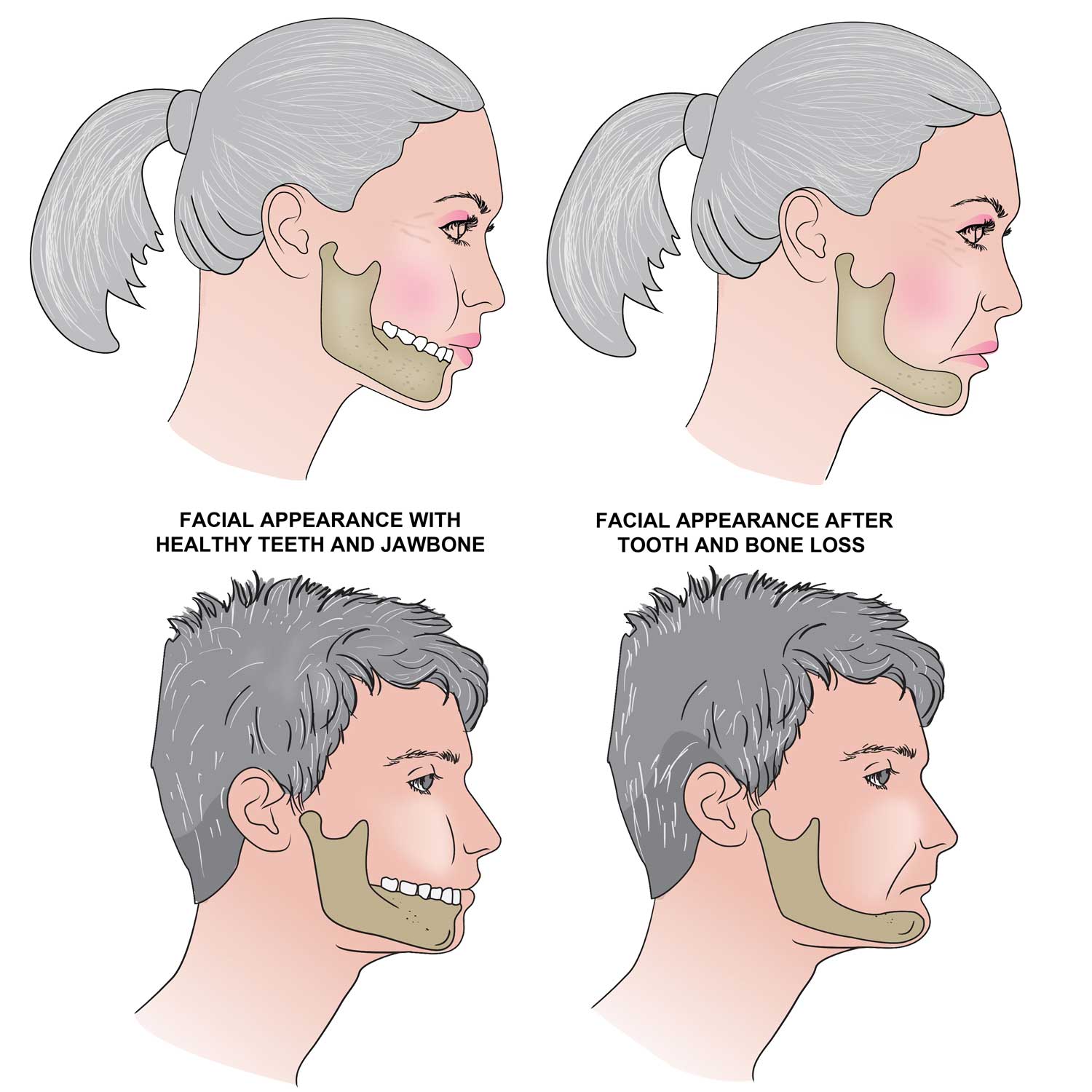
Treatment Options for Missing Teeth
No matter how many teeth you are missing, various tooth replacement options are available, including dentures, dental bridges, and dental implants. Dentures are removable artificial teeth that can replace an entire arch of missing teeth. However, they do not stimulate the jawbone in the same way as natural healthy teeth, which can lead to further deterioration of the jawbone.
A dental bridge is a fixed option that involves attaching artificial teeth to existing teeth or implants. They can replace a single tooth or more missing natural teeth in a row. A dental implant is a more effective option for preserving jawbone density and preventing facial collapse. Implants are permanent artificial teeth that are surgically placed into the jawbone, stimulating the jawbone in a way that helps preserve its density.
The more your jawbone atrophies and weakens, the more challenges you face when replacing your missing teeth. Dental implants and dental bridges both require a certain amount of bone density to be successful. If you do not have enough bone, you may need to rebuild your jawbone with bone grafts in order to be able to use these options.
However, if you do not have enough bone density for traditional dental implants, you may still have other options available to you like, Zygomatic implants which are anchored in the cheekbone rather than the jawbone and may be an option for those with insufficient bone density to support traditional dental implants.
Shifting Teeth and Changes in Jawline Alignment
Missing teeth can cause shifting teeth and changes in jawline alignment, leading to several adverse outcomes. When a tooth is missing, the surrounding teeth may move in an attempt to fill the gap, resulting in an uneven jawline and improper bite. The shift in the teeth can also cause changes in the overall alignment of the lower jaw, which can cause discomfort and may lead to problems with teeth grinding and jaw pain.
In addition, misaligned teeth can be more challenging to clean, leading to an increased risk of tooth decay, gum disease, and gum recession, negatively affecting your overall dental health, causing problems with biting and chewing, making it difficult to eat and speak properly.
Preventing Wrinkles and an Aged Appearance: How Missing Teeth Affect Facial Muscles
Missing teeth change and contribute to deteriorating facial muscles, developing wrinkles, and an aged appearance. In addition, when a tooth is lost, the surrounding muscles may begin to deteriorate.
This is because the teeth and jawbones play a key role in supporting the muscles of the face. Without this support, the muscles may begin to sag, leading to wrinkles and facial aging.
In addition, missing teeth can cause changes in the way the lips and surrounding facial tissues rest, which can alter the appearance of the face. These changes can also contribute to developing wrinkles and an aged appearance.
Preventing tooth loss and addressing missing teeth as soon as possible can help to maintain the support and function of the muscles in the face and prevent wrinkles and an aged appearance.
The Importance of Addressing Missing Teeth and Jawbone Loss Early On
The long-term effects of tooth and jawbone loss can be significant and far-reaching. In addition to aesthetic concerns, tooth loss can also affect the function of the teeth and jaw, making it difficult to eat and speak properly, so addressing missing teeth and jawbone loss early on can help to prevent these long-term negative consequences.
Replacing missing teeth can help preserve the jawbone’s integrity, prevent your facial features from changing, and maintain the proper alignment of the teeth and jawline. It can also improve the function of the teeth and jaw and help to maintain a youthful and healthy appearance.
Don’t underestimate the importance of even a single missing tooth – taking action to replace it can have a big impact on your overall oral health and appearance.
Using Dental Implants to Treat Facial Sagging and Reverse the Effects of Facial Collapse Brought On by Tooth Loss
It’s critical to replace missing teeth as soon as possible to preserve a healthy smile and facial structure. Dental implants can help lift and support the entire face, especially when tooth loss has resulted in facial drooping or collapse.
When a tooth is lost, the bone that is used to support the tooth begins to resorb or break down. This can lead to a decrease in bone density, resulting in facial sagging or a sunken appearance.
A dental implant is designed to replace the roots of missing teeth and can help to stimulate the jaw bone, preventing further bone loss and potentially promoting new bone growth.
By providing structural support for the tissues and face muscles, implants can help to lift and support the face, giving it a more youthful and rejuvenated appearance.
Dental implants look great, but they can also make it easier to eat and speak. Additionally, they can help keep the remaining teeth from moving around, which could further accelerate the collapse of the face.
If you are missing one or more teeth, it is important to speak with Dr. Aalam and Dr. Krivitsky to discuss your replacement options. Don’t let tooth loss affect your appearance and self-confidence another day. Instead, take action to restore your smile and preserve the shape of your face.
You May Also Like...
Considering Dental Implants in Santa Monica? What You Should Know Before Getting Started
Thinking about getting dental implants in Santa Monica? Get expert insight, trusted care tips, and everything you need...
How Much Do Dental Implants Cost in Southern California? A Complete Guide
If you're considering dental implants in Southern California, you’re likely wondering: How much will they cost? Are...
Can Zygomatic and Pterygoid Implants Be Done in a Day? Breaking Down the Process
Losing bone in the upper jaw can feel overwhelming, especially if you've been told traditional implants aren’t an...

